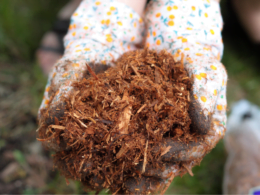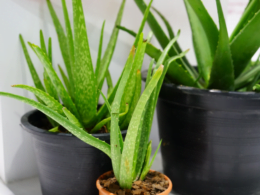Are you looking for a fun and rewarding activity to do this spring? Why not try planting your own vegetable garden? Not only does it provide delicious and nutritious produce for your meals, but gardening also has potential benefits for your mental and physical health.
In this article, we will guide you through the 17 best vegetable crops to plant in early spring. From asparagus to radishes to Brussels sprouts, we will give you tips on choosing the right varieties and suggestions for using homegrown veggies in cooking.
With our help, you can spring into gardening and grow your own food, all while enjoying the many benefits that come with this fun and fulfilling activity.
Quick Takeaways
- Planting a vegetable garden in spring can have multiple benefits for mental and physical health.
- Choosing the right location with plenty of sunlight and well-draining soil, preparing the soil with compost, using proper growing techniques, and maintaining consistent watering and fertilization are the key factors for successful gardening.
- Some of the best spring vegetables to plant include asparagus, radishes, cabbage, lettuce, sugar snap peas, and broccoli.
- Using homegrown veggies in cooking can boost nutritional value and add a tasty touch to dishes.
Best Spring Vegetables
You can start planting the best spring vegetables now, including asparagus, cauliflower, radishes, turnips, cabbage, Brussels sprouts, collard greens, lettuce, kale, carrots, sugar snap peas, rhubarb, spring garlic, spinach, potatoes, beets, and broccoli. To ensure a successful harvest, you’ll want to use the proper growing techniques for each vegetable. For example, asparagus prefers well-drained soil while broccoli needs plenty of sunlight.
Do your research and plan accordingly to achieve the best results.
Once your veggies are ready to harvest, you can use them in a variety of delicious recipe ideas. Try roasting beets with balsamic vinegar or making a fresh kale salad with lemon dressing. Sugar snap peas make a great snack on their own or can be added to stir-fries for some extra crunch.
With so many options, incorporating homegrown veggies into your meals will not only boost their nutritional value but also add a tasty touch to your dishes.
Is it necessary to transplant hydroponic plants into soil for spring gardening?
Transplanting hydroponic plants to soil for spring gardening is not necessary, as hydroponics allows plants to thrive without soil. Hydroponic systems provide all necessary nutrients directly to the plant’s roots in a water-based solution. However, if you prefer traditional gardening methods or want to experiment, you can indeed transfer hydroponic plants to soil successfully.
Benefits of Gardening
Get ready to reap the mental and physical benefits of gardening by dedicating time and effort to cultivate your own backyard oasis. Not only does gardening provide a sense of accomplishment and satisfaction, but it can also have a positive impact on your mental health.
Studies have shown that spending time in nature and engaging in gardening activities can reduce depression and anxiety, increase overall happiness, and improve cognitive function.
If you don’t have the space or resources to maintain your own garden, consider joining a community gardening program. These programs provide access to shared plots and resources, as well as the opportunity to connect with others who share your passion for gardening.
Not only can you learn new skills and techniques, but you can also enjoy the social benefits of working alongside others towards a common goal. So why wait? Start reaping the benefits of gardening today!
Tips for a Successful Garden
To ensure a successful garden, it’s important to choose the right location with plenty of sunlight and well-draining soil. Before planting, make sure to prepare the soil by adding compost or other organic matter to improve its structure and fertility.
Companion planting is also a great way to maximize space and promote healthy plant growth. For example, planting marigolds with vegetables can help deter pests, while growing beans with corn can provide nitrogen for the soil.
In addition to soil preparation and companion planting, maintaining consistent watering and fertilization is crucial for a thriving garden. Water deeply and regularly, especially during hot and dry spells. Use a balanced fertilizer to provide essential nutrients to your plants.
Regularly remove weeds and dead plant material to prevent disease and promote air circulation. Following these tips will help you achieve a successful garden that yields plenty of fresh and healthy produce.
Frequently Asked Questions
What are some common pests or diseases that can affect the spring vegetable crops listed in the article?
Common pests and diseases of spring veggies include aphids, cutworms, and powdery mildew. Prevention tips include crop rotation, proper watering, and using insecticidal soap. Weather can affect prevalence, but timely treatment can prevent damage.
Are there any specific soil or nutrient requirements for successfully growing these spring veggies?
To successfully grow spring veggies, ensure the soil is well-draining, rich in organic matter, and has a neutral pH. Nutrient requirements vary, but generally, a balanced fertilizer and regular watering can support healthy growth.
How much space do these spring vegetables typically need in a garden or raised bed?
To maximize your garden space, it’s important to know how much room each spring vegetable needs. Some plants, like radishes and lettuce, can be planted close together, while others, like broccoli and cauliflower, require more space. Companion planting can also help make the most of your space.
Can these spring vegetables be grown in containers or do they require a traditional garden setup?
Yes, these spring vegetables can be grown in containers, making them perfect for urban gardening. With container gardening, you can still enjoy fresh produce without a traditional garden setup. Just make sure your containers have proper drainage and enough space for the plants to grow.
What are some common mistakes that beginner gardeners make when planting spring vegetables, and how can they be avoided?
Avoid common gardening mistakes by properly watering your spring vegetables. Tips include starting with healthy soil, choosing the right location, spacing plants correctly, and monitoring for pests. Proper watering techniques are crucial for success.








